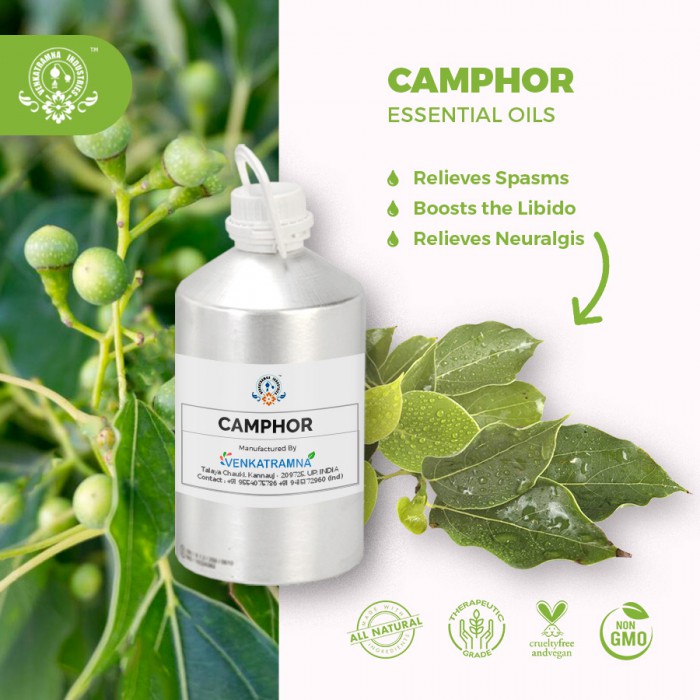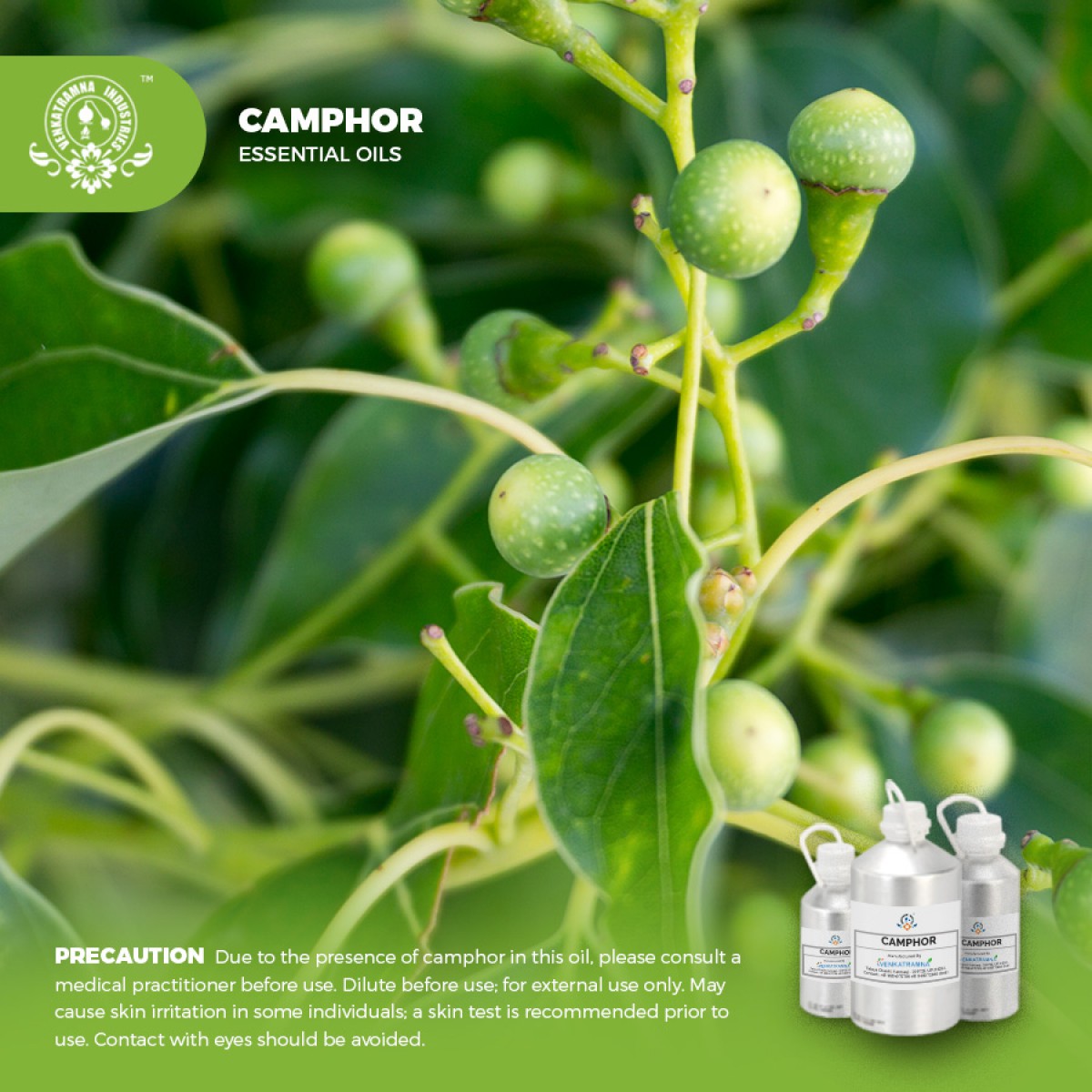Botanical Name: Cinnamomum Camphora Common name: Kapur, karpurammu, hon-sho, Camphor l Read More
|
Botanical Name: |
Cinnamomum Camphora |
|
Common name: |
Kapur, karpurammu, hon-sho, Camphor laurel, camphor, camphor
tree, camphor tree, Formosa camphor, gum camphor, Japanese camphor |
|
Plant family: |
Lauraceae |
|
Genus: |
Cinnamomum |
|
Appearance/Color: |
Slightly viscous, pale yellow to brown liquid. |
|
Odor: |
Top note with a
strong, penetrating, fragrant odor. |
|
Blends With: |
Basil, cajeput, chamomile, lavender, Melissa, and
rosemary. |
|
Origin |
China |
C. camphora is a
designated noxious weed in north-eastern New South Wales and an important weed
in south-east Queensland, Australia). It dominates the landscape in cleared or
disturbed hillsides, valleys and watercourses approximately 100 years after it
was extensively planted as an ornamental tree species, particularly on elevated
krasnozem soils. C. camphora bears heavy fruit loads which are attractive to a
number of bird species, which spread seed extensively, and seed have excellent
viability in the first year. It forms single-dominant stands that dominates
other vegetation and is a major economic weed pest to landholders, power
authorities and local councils. It is spreading in other agricultural areas on
the east coast of Australia, and there is potential for spread in other
sub-tropical areas throughout the world.
Camphor tree is a medium to large
evergreen tree with a broad, dense and symmetrical crown. The tree is tall with
wide spreading branches and a trunk. Mature leaves are green in color and
broad. The tree also bears white to cream colored flowers in spring season and
red berries.
The Cinnamomum Camphora oil
extracted from the leaves, stem and bark of the plant is used in the
pharmaceutical and perfume industry. Camphor is also used as spices and
culinary herbs. The leaves are used as animal feed.
Cinnamomum Camphora oil is
considered of medicinal importance in Ayurveda and Unani system
of medicine. It is anti-fungal, anti-bacterial, anti-inflammatory,
anti-spasmodic and anti-oxidant in nature. It is used to treat cough and cold,
skin diseases and improves digestive system.
Due to the strong fragrance and bitter flavor it is used to make perfume and to treat many parasitic infections. Cinnamomum Camphora oil also gives cooling sensation like menthol and gives relief in toothaches. The Camphor plant is traditionally used to treat many diseases that causes inflammation, irritation and itching.
DISCLAIMER
The complete range of conditions
or methods of use are beyond our control therefore we do not assume any
responsibility and expressly disclaim any liability for any use of this
product. Information contained herein is believed to be true and accurate however,
all statements or suggestions are made without warranty, expressed or implied,
regarding accuracy of the information, the hazards connected with the use of
the material or the results to be obtained from the use thereof. Compliance
with all applicable federal, state, and local laws and local regulations
remains the responsibility of the user.
The FDA has not evaluated the
statements on this website. No claims are made by Venkatramna Industries as to
the medicinal value of any products from vriaroma.com or by us. The information
presented here is for educating our customers about the traditional uses of
essential oils and is not intended to diagnose, treat, cure, or prevent any
disease. You are responsible for understanding the safe application of these products.
If you have any questions, please call or email us for further information.
As per NAHA guidelines, New Directions Aromatics
(NDA) does not recommend the ingestion of essential oils. It is imperative to
consult a medical practitioner before using Essential Oils for therapeutic
purposes. Pregnant and nursing women and those taking prescription drugs are
especially advised not to use this product without the medical advice of a
physician. The oil should always be stored in an area that is inaccessible to
children, especially those under the age of 7.
Camphor has been used for
many centuries as a culinary spice, a component of incense, and as a medicine.
It is also an insect repellent and a flea-killing substance. Camphor obtained
from the Camphor tree has many medicinal properties. In Ayurveda, it is
well known for its benefits to humans. It is a well-known anti-oxidant and used
to treat kidney related diseases. It is a potent fungicidal and cues the fungal
infection of nails and skin. It is also used to treat cough and cold, gum
problems, tooth decay digestive problems. It relaxes brain and nerves and acts
as a narcotic.
Camphor Oil in Pharma
Camphor has been used for many
centuries as an antiseptic, an aphrodisiac, a culinary spice, and a component
of incense and for cold remedy and other medicinal purposes. Camphor is known
to modulate sexual activity, contraception, induce abortion, and reduce milk
production in lactating women. It can pass the placental barrier and affects
embryo development. Recently, investigations have shown that camphor-containing
compounds have uterotrophic, antitussive, anticonvulsant, nicotinic receptor blocking,
anti-implantation, antiestrogenic, as well as estrogenic activities, and
reduced serum triglyceride and thyroid hormone. Camphor has demonstrated a
dose-dependent decrease in human sperm motility and viability, which counts for
decreasing effectiveness for fertilization and thus acts as a contraceptive.
Essence of Camphor Oil
Camphor is a waxy, white
crystalline solid substance, obtained from the tree Cinnamomum camphora with a
strong scent. Its terpenoid is originally obtained by distillation of bark from
camphor tree. It has been used for many centuries as a culinary spice, a
component of incense, and as a medicine. It is also an insect repellent and a
flea-killing substance.
COMMON USAGE
·
Improves circulation
·
Prevents skin infections
·
Eliminate gas
·
Reduce nervous disorders
·
Relieves spasms
·
Boosts the libido
·
Relieves Neuralgis
·
Reduces inflammation
·
Reduces arthritis pain
·
Relaxes nerves and brain
·
Relieves congestion
Ingredients:
|
S.No |
Key Constituents |
Strength (%) |
|
1 |
(p)-limonene |
44.2 |
|
2 |
p-cymene |
24.2 |
|
3 |
a-pinene |
8.9 |
|
4 |
1,8-cineole |
6.5 |
|
5 |
sabinene |
4.2 |
|
6 |
b-pinene |
4.0 |
|
7 |
camphene |
3.0 |
|
8 |
Camphor |
2.4 |
|
9 |
safrole |
0-1 |
TOXICOLOGICAL
INFORMATION
Safety Summary
·
Hazards: Not known.
·
Contraindications: Not known.
Organ Specific Effects
·
Adverse skin reactions: No Information
Available
·
Acute toxicity: no information found
·
Carcinogenic/anticarcinogenic potential: No
Information Available
Systemic Effects
·
Skin corrosion / irritation No additional data
available.
·
Serious eye damage / irritation No additional
data available.
·
Respiratory or skin sensitization No additional
data available.
·
Germ Cell Mutagenicity No additional data
available.
·
Carcinogenicity No additional data available.
·
Reproductive toxicity No additional data
available.
·
STOT-single exposure No additional data
available.
·
STOT-repeated exposure No additional data
available.
·
Aspiration hazard No additional data available.
·
Photo-toxicity No additional data available.
ECOLOGICAL
INFORMATION
·
Toxicity Acute fish toxicity: LC50 / 96 HOUR –
No data available
·
Toxicity to aquatic plants – No data available
·
Toxicity to microorganisms – No data available
·
Toxicity threshold – No data available
·
Persistence and degradability Biodegradation is
expected
·
Bio-accumulative potential Bioaccumulation is
unlikely
·
Mobility in soil Unknown





 MSDS-Camphor.pdf
MSDS-Camphor.pdf




